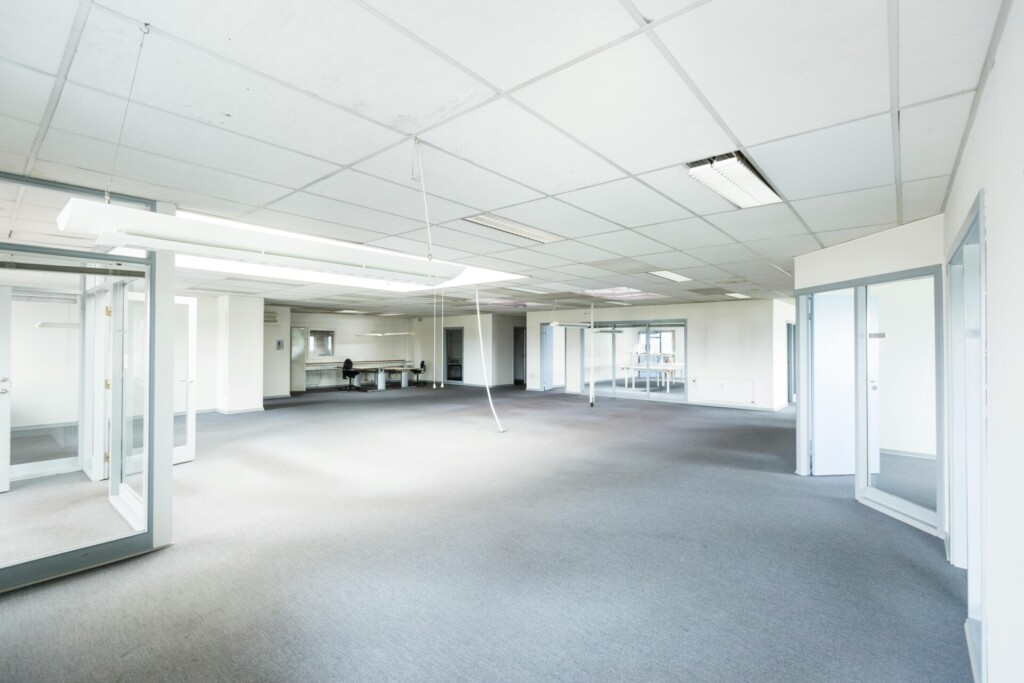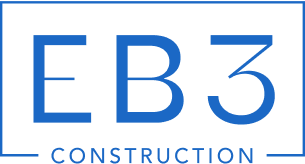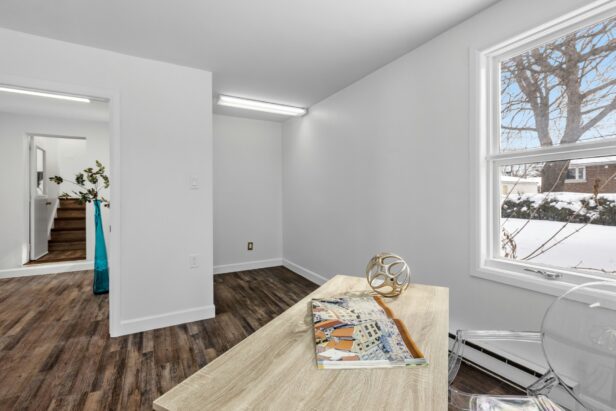When managing office renovations for our clients, we find that projects can span a wide spectrum. Some developers may need straightforward improvements like fresh paint and wall reconfigurations, while others may require more extensive transformations of spaces. Property owners often approach us after securing basic renovations through landlord negotiations, where standard updates are built into the lease structure. These arrangements can provide a starting point but may not always deliver the specialized environments that maximize a property”s value or functionality.
Custom renovations typically demand a more nuanced approach. Construction teams consider factors including building characteristics, structural elements, location, and operational requirements to assess costs. Market conditions can introduce additional challenges, with material availability and labor costs potentially fluctuating across regions. The cost of renovations can vary significantly based on the selected finishes and materials. Projects using standard finishes typically have different price ranges compared to those featuring premium materials like wood veneer wall treatments, stone surfaces, or custom architectural features.
The condition of older buildings can introduce additional considerations. Experienced contractors may encounter issues such as uneven floors, outdated electrical systems, or structural elements that require attention before visible improvements can begin. These situations can be managed effectively by contractors who understand commercial construction sequencing and can adapt to field conditions while aiming to maintain project timelines.
How Should You Plan Your Office Renovation Project?

Planning an office renovation requires meticulous attention to detail and strategic foresight. A comprehensive planning phase can serve as the foundation for successful execution. The decisions made during this stage can directly impact the timeline, budget, and ultimately, the functionality of your renovated space.
Developing Your Project Roadmap
Creating a detailed project roadmap can outline every phase of the renovation. This may include evaluating your current space constraints, identifying operational requirements, and mapping out how the renovated environment will support your business objectives. For developers and property owners, considering future growth scenarios can be beneficial, including potential needs for additional workstations, private offices, or expanded meeting facilities.
When planning your office renovation, determining whether a complete overhaul or a phased approach makes more sense for your operation can be helpful. Some businesses opt for phased renovations that allow portions of their operations to remain functional throughout construction, potentially minimizing disruption. Others may prefer compressing the timeline with a full renovation when circumstances allow for temporary relocation.
Establishing a Realistic Budget Framework
Budget planning forms the backbone of any successful office renovation. Developing comprehensive budgets that account for all aspects of the project is crucial. Construction costs typically vary based on factors such as location, project scope, and material selection.
A thorough budget typically includes:
- Design and architectural fees
- Construction materials and labor
- Mechanical, electrical, and plumbing modifications
- Permit and inspection costs
- Furnishings and fixtures
- Technology infrastructure upgrades
- Contingency reserve
The construction market experiences fluctuations in material availability and costs. Monitoring these trends and considering timing purchases can help maximize your budget while maintaining quality standards.
| Item | Price | Price for 1,500 sq. ft. Office Space |
| Architect/Contractor | 18-22% of total budget | $52,000 – $65,000 |
| Lighting | $2.90 – $3.50 (per square foot) | $4,350 – $5,250 |
| Flooring | $5.50 – $6.80 (per square foot) | $8,250 – $10,200 |
| Glass Walls | $160 – $200 (per square foot) | $240,000 – $300,000 |
| Painting | $4.50 – $5.30 (per square foot) | $6,750 – $7,950 |
| HVAC | $20 – $25 (per square foot) | $30,000 – $37,500 |
| Labor | 9-11% of total budget | $22,500 – $27,500 |
| Permits | 5-10% of total budget | $18,000 – $22,500 |
| Total | $382,000 – $476,000 |
Disclaimer: Pricing figures are based on publicly available market data and are intended for general estimation purposes as of undefined. They do not represent a formal quote from EB3 Construction. Actual costs will vary by project scope, location, labor rates, and material prices.
Creating a Realistic Timeline
Effective scheduling is critical to project success. Developing detailed timelines that identify all key milestones and dependencies can be beneficial. Office renovation timelines can vary, but may include phases such as:
- Pre-construction planning: Several weeks
- Design development: Multiple weeks
- Permitting: Variable duration based on local regulations
- Demolition: Short-term phase
- Construction: Core project phase
- Finish work and punch list: Final phase
Construction schedules often face unexpected challenges. Building buffer periods into critical path activities can help absorb unforeseen issues without compromising the overall completion date. Careful coordination between specialty trades can help avoid costly delays and sequencing problems.
Implementing Sustainable Design Solutions
Sustainability considerations have become essential in modern office renovations. Integrating environmentally responsible practices throughout the planning process can identify opportunities for energy efficiency and resource conservation that may deliver both environmental benefits and operational cost savings.
Common sustainability elements to consider include:
- Energy-efficient LED lighting systems with smart controls
- High-efficiency HVAC upgrades with improved air filtration
- Locally-sourced and recycled building materials
- Water-conserving plumbing fixtures
- VOC-free paints and finishes for improved indoor air quality
These sustainable building practices not only can reduce environmental impact but often qualify for utility rebates, tax incentives, and certification programs that may offset initial investments through long-term operational savings.
Establishing Clear Communication Channels
Successful renovations rely on clear, consistent communication. Establishing robust communication protocols at project initiation can help keep all stakeholders informed throughout the process. This may include weekly progress meetings, shared digital documentation systems, and regular site visits with ownership representatives.
For occupants remaining in partially renovated spaces, developing specific communication plans addressing noise schedules, utility interruptions, and access limitations can be beneficial. Transparent communication can help minimize surprises and build trust throughout the construction process.
When planning your office renovation, engaging a construction team early in the process can help identify potential challenges and develop solutions before they impact your timeline or budget. Preconstruction services can help refine project scope, validate budgets, and establish realistic expectations for all stakeholders.
Who Should Be on Your Office Renovation Team?
A successful office renovation requires careful planning and coordination. Assembling the right team can set the foundation for a quality commercial remodel. The professionals involved can influence both the finished product and how smoothly the process unfolds from conception to completion.
A core team for office renovation projects typically includes architects to translate vision into functional designs, experienced contractors to oversee construction, licensed electricians for power and lighting requirements, certified plumbers for water and drainage systems, and audio-visual experts to integrate communication technology. Each of these professionals can bring specialized knowledge of building codes and regulations.
Vetting Your Construction Professionals
When selecting subcontractors and specialists for a renovation team, a thorough vetting process is important. This may involve requesting references from past commercial clients and examining portfolios of previous projects. Working with professionals who have experience in commercial office environments similar to yours can be beneficial. Construction market conditions may affect the availability of qualified contractors.
It”s advisable for team members to provide detailed plans, budgets, and regular progress reports. Professionals who can clearly communicate their approach and timelines may be better equipped to handle potential complications during construction.
Internal Team Coordination
Beyond external professionals, establishing an internal team structure within your organization can be valuable. Designating specific point people from your company to communicate directly with the construction team can create important bridges between your business objectives and the construction process.
Having dedicated internal coordinators can help maintain project continuity and ensure efficient decision-making. When questions arise about finish selections or equipment specifications, these team members may provide timely answers, potentially preventing delays. Assigning clear internal authorities can help minimize disruptions to business operations during renovations.
Establishing a communication cadence at the start of the project, such as weekly coordination meetings, shared digital documentation, and regular site walkthroughs, can keep stakeholders informed of progress and emerging challenges. When renovating occupied office spaces, this communication becomes even more critical for coordinating construction activities around ongoing business operations.
| Role | Responsibilities |
| Contractor | Oversees the physical construction |
| Architect | Translates vision into functional designs |
| Interior Designer | Handles interior aesthetics and function |
| Electrician | Handles all power and lighting requirements |
| Plumber | Manages water and drainage systems |
| Audio Visual Expert | Integrates modern communication technology |
The quality of your renovation team can significantly impact the success of your project. Investing time in assembling the right team from the outset can create conditions for a more efficient renovation process. By establishing clear roles, responsibilities, and communication channels from day one, you can help set the stage for a renovation that aligns with your strategic objectives.
What Finishing Touches Complete an Office Remodel?

What Finishing Touches Complete an Office Remodel?
The final details of an office renovation can have a significant impact on how the space feels and functions. While structural work provides the foundation, it”s the finishing touches that can transform a standard remodel into a thoughtfully designed workplace. Careful sequencing of these final elements helps ensure they integrate seamlessly with the primary construction work.
Interior Enhancements That Elevate Your Space
Biophilic elements can influence workplace satisfaction and productivity. Strategic placement of plants throughout the office, selecting varieties that thrive in specific lighting conditions of each area, may be beneficial. For spaces with limited natural light, specialized grow lights disguised as track lighting can help ensure plant health while maintaining aesthetic coherence.
Lighting is one of the most transformative finishing touches in any office renovation. Both functional requirements and aesthetic considerations are important when implementing lighting solutions. This often includes layering ambient overhead lighting with task-specific fixtures and accent lighting to highlight architectural features or branded elements. Proper lighting can enhance visibility and influence mood and energy levels throughout the workday.
Artwork installation requires coordination with other finishing elements. Pieces that reinforce brand identity and company culture can be positioned to maximize impact while ensuring they receive appropriate lighting. Wall-mounted pieces need proper anchoring systems based on the construction materials, which can be managed as part of the comprehensive finish phase.
| Plant Name | Light Conditions |
| Braided Money Tree | Adapts to various light conditions |
| Dracaena Lisa | Thrives in low to medium light |
| Snake Plant (Sansevieria) | Tolerates low light |
| Peace Lily | Prefers partial shade |
| Bird”s Nest Fern | Thrives in medium to bright indirect light, tolerates lower light |
Exterior Considerations That Create Lasting Impressions
The exterior of an office building delivers a crucial first impression for clients and visitors. Evaluation of exterior signage placement, visibility, and lighting can help ensure brand presence remains strong after dark. Fresh, professional signage with clear, readable fonts can reinforce company identity while helping visitors navigate to entrances effectively.
Landscaping features can frame the building and create a welcoming approach. Coordination with landscape specialists can help implement low-maintenance plantings that complement architectural elements while requiring minimal ongoing care. For urban locations, small seating areas or hardscape features can provide functional outdoor spaces for employees and visitors.
Building entrance areas typically receive particular attention during the finishing phase. These high-traffic zones often feature durable, easily maintained surfaces that can withstand frequent use while still presenting a polished appearance. This may include considerations for weather protection, mat systems that reduce tracked-in debris, and adequate lighting for safety and wayfinding.
Coordinating Multiple Finishing Elements
The sequencing of finishing touches requires careful planning to prevent damage to completed work. Delicate installations like artwork mounting are typically scheduled after painting and flooring completion but before furniture delivery. This phased approach can minimize the risk of damage while maintaining efficient project timelines.
Material selection for finishing elements must balance aesthetics with practical durability. In high-traffic areas, robust materials that maintain their appearance despite frequent contact may be recommended. This might include scuff-resistant wall finishes in corridors or moisture-resistant surfaces near kitchen areas and entrances.
Strategic allocation of resources for finishing touches can significantly enhance the overall impact of the renovation. Identifying elements that offer the greatest value relative to their cost is crucial. In some cases, carefully placing a select number of high-quality items may prove more effective than distributing numerous lower-quality pieces throughout the space. This focused approach can help create memorable focal points and support a strong return on investment for finishing elements.
Conclusion: Making Your Office Remodeling Project a Success

At EB3 Construction, we understand how a well-executed office remodeling project can transform a workspace. The journey from concept to completion requires strategic planning, transparent budgeting, and coordinated execution—elements we aim to deliver for developers and property owners throughout every project phase.
The key to success is in the details. We can establish timelines with contingencies for unforeseen conditions, maintain open communication with stakeholders, and balance functionality with aesthetics. When managing a renovation, we focus on creating an environment that supports business operations while accommodating potential future needs. The commercial renovation market continues to evolve with trends toward flexible workspaces and sustainable materials, and our team stays informed about these shifts to help you achieve the greatest possible value for your investment.
Ready to transform your workspace? Contact EB3 Construction to discuss how we can help bring your office renovation vision to life.




